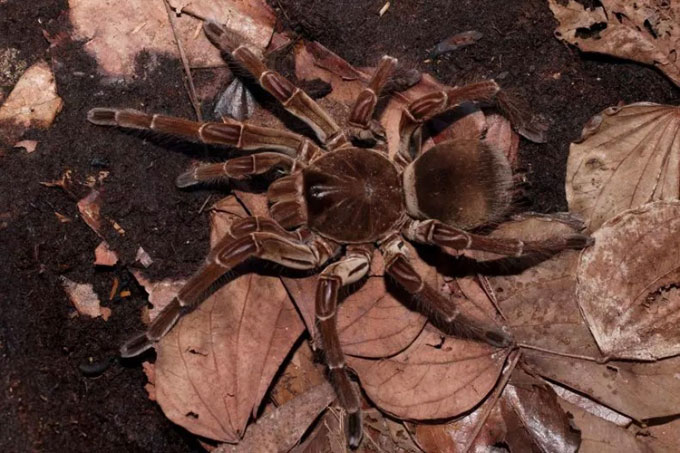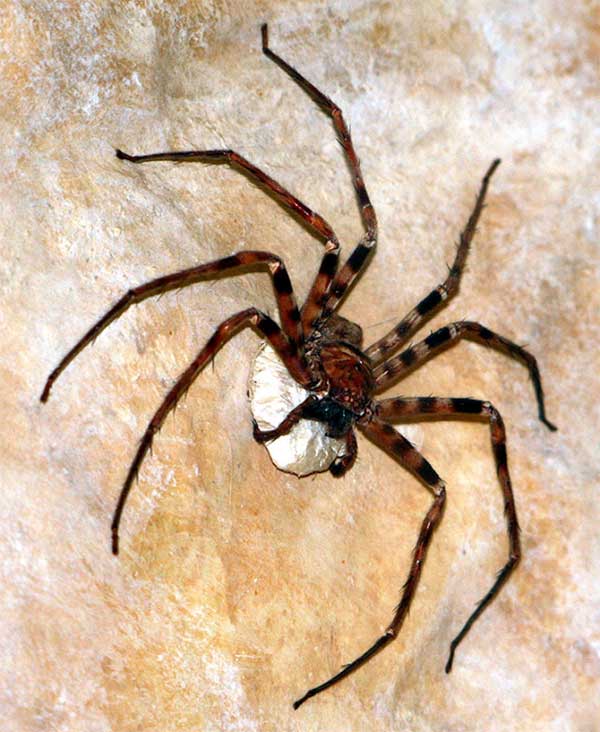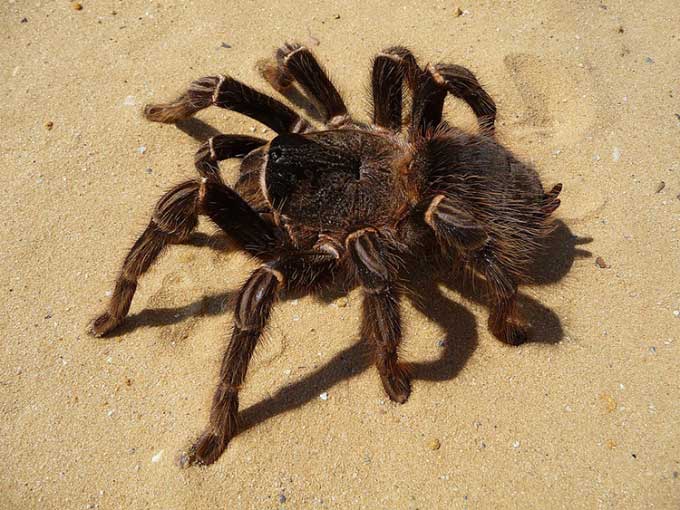The Goliath bird-eating spider tops the list of the largest spider species by weight, but it is still smaller than the giant Huntsman spider when it comes to leg span.
The first spider species evolved around 400 million years ago. Most of them live underground, adapting to a burrowing lifestyle rather than spinning webs. They have developed more aggressive hunting strategies, as prey was often larger during that time, according to PhD researcher Anna Holmquist at the University of California, Berkeley, USA.
Over time, most spiders adapted to web-spinning and became smaller, but some have maintained their burrowing lifestyle to this day, dominating the list of the largest spider species.

Goliath Bird-Eating Spider. (Photo: Dan Olsen)
With a body length of up to 13 cm, a leg span of nearly 30 cm, and weighing up to 175 grams, the Goliath bird-eating spider (Theraphosa blondi) is recognized as the largest living spider in the world by weight. It is found in the tropical rainforests of South America and prefers to hide under rocks or in underground burrows.
Despite being called a bird-eating spider, Theraphosa blondi primarily feeds on insects, earthworms, amphibians, and occasionally larger rodents like mice. Instances of bird predation have been recorded but are quite rare.
“Another misconception is that this giant spider can be deadly, but that’s not true at all. They have venom, but it’s not strong enough to be fatal,” Holmquist stated.

Giant Huntsman Spider. (Photo: Petra & Wilfried)
The Goliath bird-eating spider is the largest by weight but not by leg span. That title belongs to the giant Huntsman spider (Heteropoda maxima) found in Laos. They have a leg span of 30 cm, slightly longer than the Goliath spider, but their body is significantly smaller, measuring about 4 – 4.6 cm in length.
Similar to the giant bird-eating spider, Heteropoda maxima does not spin webs. They typically hide under rocks or rough tree bark to ambush prey, using their venom to kill them. The diet of the Huntsman spider mainly consists of large insects like cockroaches.
Ranking third among the largest spider species is the Brazilian bird-eating spider (Lasiodora parahybana), with a leg span of nearly 28 cm and weighing over 100 grams. They are known for their astonishing growth rate, capable of reaching 15 cm in their first year of life.

Brazilian Bird-Eating Spider. (Photo: George Chernilevsky).
Like the Goliath bird-eating spider, Lasiodora parahybana primarily feeds on insects and is rarely observed eating birds. They also do not spin webs but hunt by waiting and ambushing.
Holmquist notes that despite their impressive size, scientists still know very little about giant spiders in general.
“Currently, we have identified about 45,000 spider species, but there may actually be 80,000 to 90,000 spider species out there. Whenever I visit fields, I see giant spiders, and there could be even larger undiscovered species,” the researcher added.


















































